Frac Sand Mine is Nation’s Worst Violator
Huge mine on Iowa border plans seven-fold expansion, leads in workplace violations.
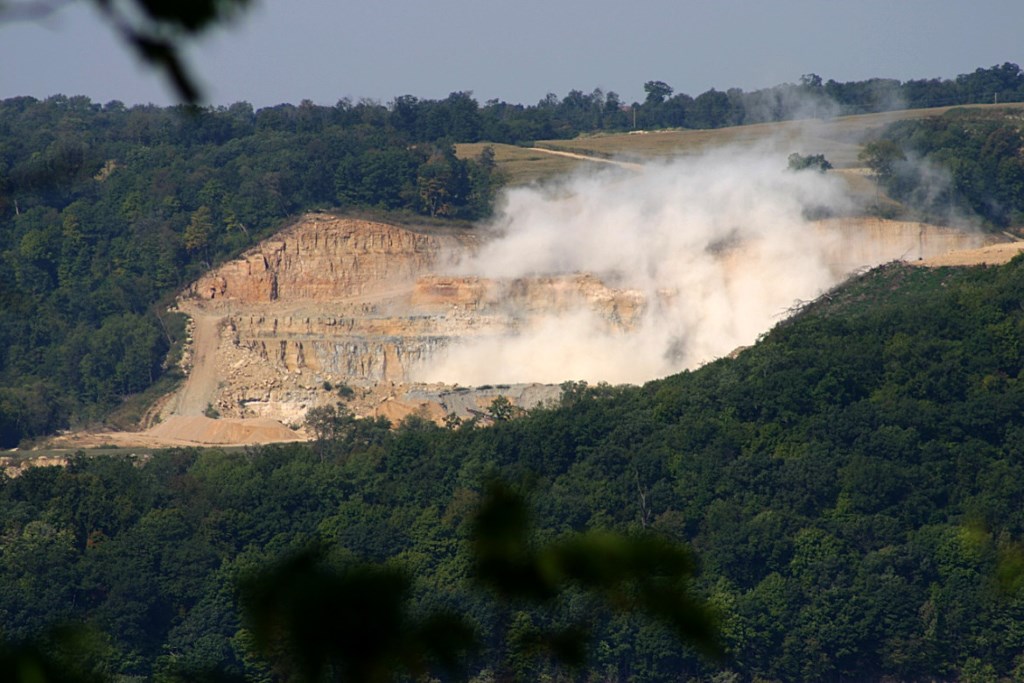
A blasting operation at Pattison Sand Co.’s surface mine in Iowa is seen on Sept. 14, 2015, from across the Mississippi River in Bagley, Wis. Homeowners Jim and Kathy Kachel say dust from the mine has gotten inside of their home. Photo courtesy of Jim Kachel.
A controversial frac sand mining company that recently opened a site in Wisconsin is facing opposition to plans for a sevenfold expansion of its underground mine in Clayton County, Iowa.
Pattison Sand Co. has requested rezoning of 746 acres of land from agricultural to heavy industrial for eventual expansion of its underground mine from its current size of about 100 acres. The site, which includes surface mining on some of its 1,600 acres, lies along the Mississippi River directly across from Bagley, Wisconsin. Many of its roughly 150 employees live in southwestern Wisconsin.
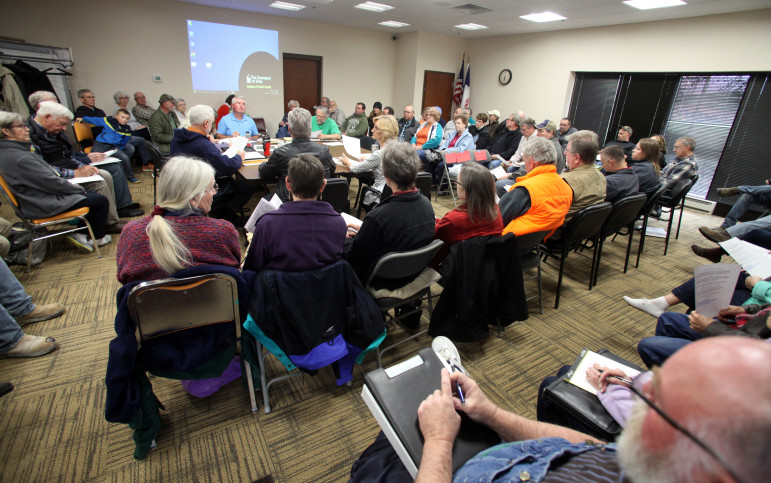
The Mine Reserve Expansion Study Committee meets in the Clayton County office building in Elkader, Iowa, on April 28. The committee was formed to determine the environmental, economic and aesthetic impacts of Pattison Sand’s proposed mine expansion. More than 60 people attended the meeting, where two experts on air quality from the University of Iowa spoke. Photo Coburn by Dukehart of the Wisconsin Center for Investigative Journalism.
Since Pattison Sand’s Clayton County site began operations in 2005, it has racked up more workplace violations than any other industrial sand mine in the United States, according to data from the Mine Safety and Health Administration (MSHA) analyzed by the Wisconsin Center for Investigative Journalism. Among the violations is a 2008 accident in which a front-end loader with a defective rearview mirror backed over a worker, killing her.
Patrick O’Shaughnessy, a professor of occupational and environmental health in the University of Iowa engineering college, told members of a county committee studying expansion on April 28 in Elkader, Iowa, that it would be wise to review the mine’s record and reputation when considering the proposal.
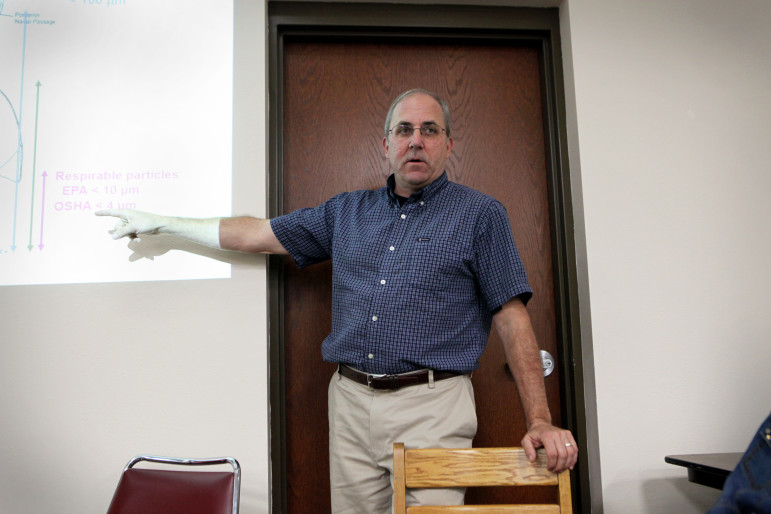
Patrick O’Shaughnessy, a professor of occupational and environmental health in the University of Iowa engineering college, speaks at a public meeting of the Clayton County Mine Reserve Expansion Study Committee in Elkader, Iowa. O’Shaughnessy said although residents living around Pattison Sand Co.’s proposed expansion face a low risk of inhaling airborne silica particles from the mine, the mine’s overall record should also be considered. Photo by Coburn Dukehart of the Wisconsin Center for Investigative Journalism.
“There are good apples and there are bad apples in every industry, from swine rearing to sand mining,” O’Shaughnessy told the committee before a crowd of more than 60 people. “Is this someone who has flagrant violations constantly, or is this someone who’s typically got a good sense of safety for their workers, environmental consciousness, and they want to be a good neighbor?”
Nevertheless, O’Shaughnessy told members of the Mine Reserve Expansion Study Committee that residents living around the proposed expansion face a low risk of inhaling airborne silica particles from the mine. Inhaling silica can cause silicosis, an irreversible and sometimes fatal lung disease that can lead to cancer and tuberculosis.
The mine produces sand for hydraulic fracturing, or fracking, which involves injecting water, fine-grained sand and chemicals at high pressure to break apart underground rock and release trapped oil and natural gas.
History of violations
According to the Center’s analysis, between April 2005 and January of this year, Pattison Sand’s site in Clayton County had 934 MSHA violations for which the company paid $279,000 in fines. Wedron Silica Co. in Illinois — the industrial sand mine with the second most violations in that time period — received 501 violations.
According to the data, little has changed since a 2013 Wall Street Journal analysis found that mining safety officials had cited Pattison Sand more than any other sand or gravel mine in the country. Among the violations identified by the Center, 235 were racked up since January 2013.
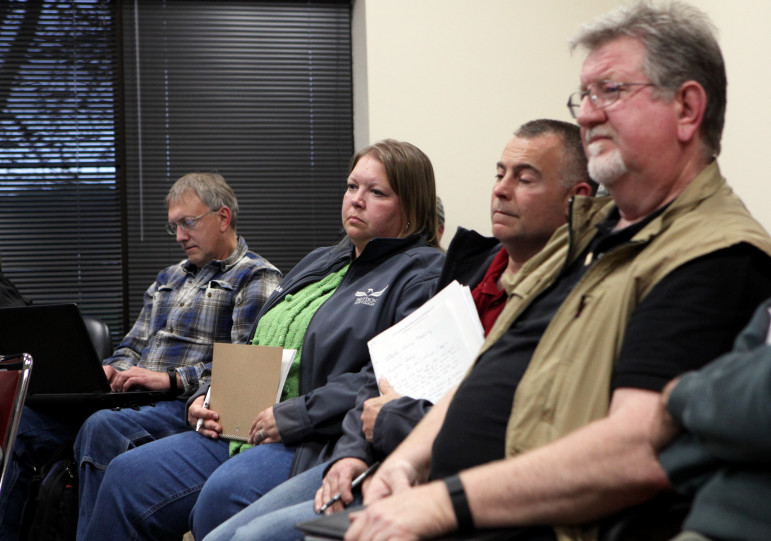
Attending a meeting of the Clayton County committee April 28 to consider the proposed expansion of Pattison Sand Co.’s Iowa mine are, from left, company manager and owner Kyle Pattison, company spokeswoman Angela Sessions, environmental compliance manager John Hendrix and health and safety director Tim Adkins. Photo by Coburn Dukehart of the Wisconsin Center for Investigative Journalism.
In addition, the Center found that 55 Pattison Sand employees have filed workers’ compensation claims for injuries sustained at the Iowa location between 2005 and January of this year. Claims include fractures, dislocations, sprains, hernias and heat prostration. Two of the claims were filed for respiratory problems.
In an interview, Christopher Hensler, district manager for MSHA’s north central district, said the regulatory agency’s inspectors have spent a lot of time at Pattison Sand’s Iowa site, but the sheer number of violations does not necessarily indicate a larger problem.
“The bulk of their violations are very simple electrical violations and defects of equipment that affect safety,” he said.
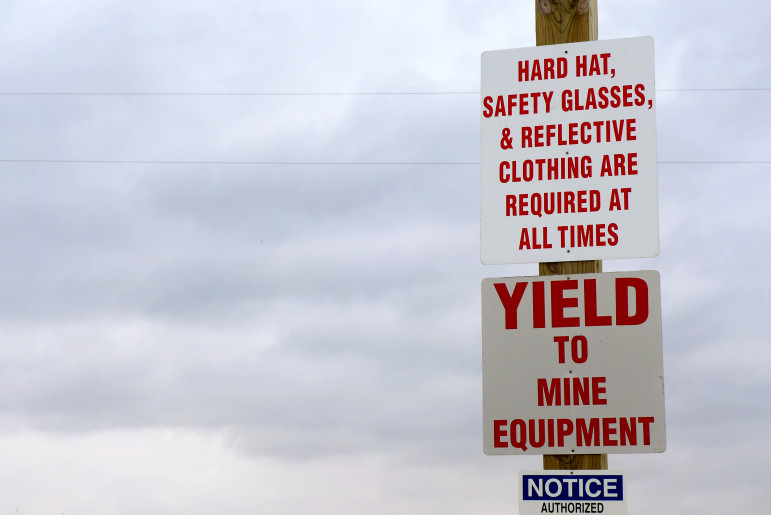
Safety signs are seen outside a frac sand mine owned by Pattison Sand Co. in Bridgeport, Wis. The mine, whose status is currently listed as “intermittent,” has received seven violations since it began operations in 2013. Photo by Bridgit Bowden of the Wisconsin Center for Investigative Journalism.
One 2008 violation involving defects of equipment, however, resulted in a fatality. In that incident, a front-end loader backed up, striking and killing a worker. MSHA’s investigation report found the accident was caused in part by the equipment’s defective rearview mirror and the lack of visible reflective material on the employee. Pattison Sand was fined $70,000 for that violation.
A 2014 fire and multiple roof collapses in 2011 also generated violations that resulted in temporary shutdowns. The collapses and an ensuing legal battle shuttered the underground portion of the mine for several months in 2011 and 2012.
Other infractions at Pattison Sand’s Iowa site include exposing workers to harmful airborne contaminants, failing to have protective equipment and clothing, and neglecting to provide at least two escapeways to the surface in the mine.
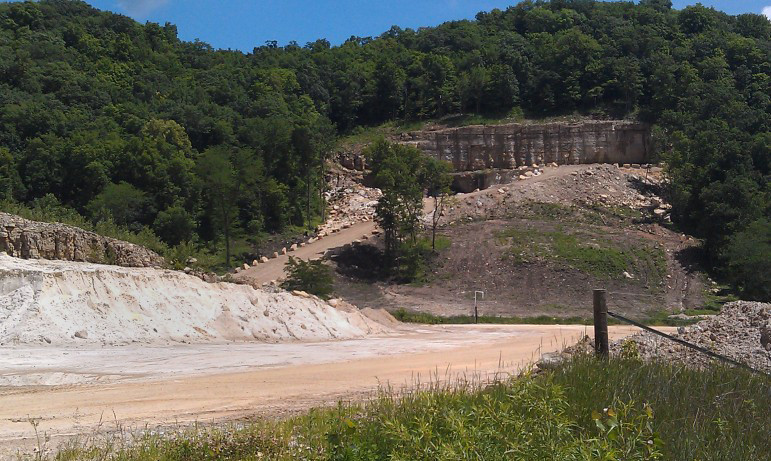
An entrance on the west end of the Pattison Sand Co. site in rural Clayton County, Iowa, is seen in 2014. The company’s mining facility in Iowa has received more workplace violations than any other industrial sand mine in the United States, according to data from the Mine Safety and Health Administration. Photo by Lyle Muller of IowaWatch.
Andy Garcia-Rivera, a former industrial hygiene compliance officer for the Occupational Safety and Health Administration, said although mines do tend to have many violations, the number of infractions Pattison Sand’s Iowa location has amassed is “unusual.”
“It tells me that there’s something wrong,” said Garcia-Rivera, who also directed environmental, health and safety compliance for the University Wisconsin-Madison campus. “Sometimes employers do take shortcuts.”
Article Continues - Pages: 1 2
-
Wisconsin Lacks Clear System for Tracking Police Caught Lying
 May 9th, 2024 by Jacob Resneck
May 9th, 2024 by Jacob Resneck
-
Voters With Disabilities Demand Electronic Voting Option
 Apr 18th, 2024 by Alexander Shur
Apr 18th, 2024 by Alexander Shur
-
Few SNAP Recipients Reimbursed for Spoiled Food
 Apr 9th, 2024 by Addie Costello
Apr 9th, 2024 by Addie Costello




















